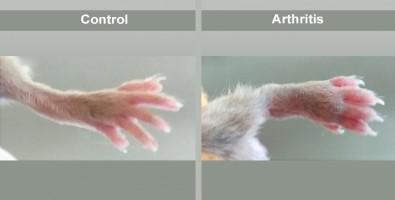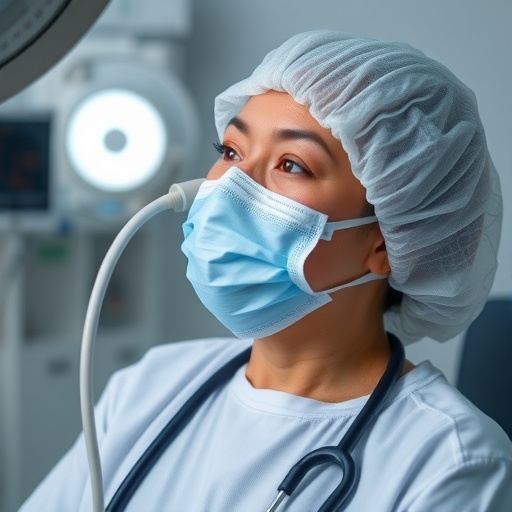Tested in mice with genetically induced arthritis, the substance decreased the area affected, reduced local swelling, and assuaged the pain associated with the inflammatory process.

Credit: N.H. Napimoga
By José Tadeu Arantes | Agência FAPESP – Arthritis affects almost 2% of the world’s population, or some 150 million people, and currently, there is no completely effective treatment for this chronic disease. A new molecule developed in the laboratory has been shown to have potential therapeutic effects. Tested in mice with genetically induced arthritis, it suppressed the inflammatory process, reducing both inflammation and joint tissue wear and tear. Arthritic mice treated with the substance displayed less pain and swelling and had lower clinical scores measuring the extent of the inflammation than untreated arthritic rats.
The findings are reported in an article in The FASEB Journal, published by the Federation of American Societies for Experimental Biology (FASEB).
“The study showed that this new molecule is capable of controlling the most severe manifestations of the disease,” Marcelo Henrique Napimoga, principal investigator for the project in Brazil, told Agência FAPESP. Napimoga is Head of Graduate Studies, Research and Extension at São Leopoldo Mandic College (SLMANDIC). The study was part of a Thematic Project supported by FAPESP.
The new molecule is called TPPU, short for 1-trifluoromethoxyphenyl-3-(1-propionylpiperidin-4-yl) urea. Its function of interest is inhibition of soluble epoxide hydrolase (sEH), an enzyme that plays a key role in activating inflammatory processes and can lead to chronic inflammation.
“Our organism naturally produces an anti-inflammatory substance called epoxyeicosatrienoic acid (EET), but sEH converts EET into 1,2-dihydroxyeicosatrienoic acid (DHET), which not only can’t control inflammation but also can have proinflammatory effects. Inhibition of sEH is therefore crucial to the treatment of inflammatory diseases such as rheumatoid arthritis. This is what TPPU does,” Napimoga explained.
The illustration at the top of this page contains two photographs of mouse paws. Both mice have genetically induced arthritis. The one on the left has been treated with TPPU, while the other has not. The treated mouse’s paw is much less swollen and has a lower arthritis score (fewer toes are affected).
According to Napimoga, the treatment also reduced the degree of pain associated with inflammation. “This was because control of the inflammatory process led to a decrease in the migration of white blood cells to the affected region, not just attenuating the disease but reducing cartilage erosion,” he said. “In addition, the treated group showed an increase in the number of regulatory T-cells, lymphocytes that produce anti-inflammatory cytokines, and a decrease in the number of Th17 defense cells, which are highly inflammatory.”
TPPU was designed to be well tolerated and easily absorbed when administered orally. “It boosts the body’s natural defenses and increases the number of metabolites our organism produces. This is a great advantage over conventional treatments based on large doses of corticosteroids, which have adverse side effects,” Napimoga said. “Besides the excellent anti-inflammatory effect, TPPU also has a strong analgesic effect.”
Bruce Hammock, a professor at University of California Davis who developed TPPU and is one of the authors of the FASEB Journal article, was recently awarded a grant of USD 15 million by the National Institute on Drug Abuse (NIDA) to support human clinical trials of a nonopioid pain therapy.
The article “Soluble epoxide hydrolase inhibitor, TPPU, increases regulatory T cells pathway in an arthritis model” can be read at: faseb.onlinelibrary.wiley.com/doi/full/10.1096/fj.202000415R.
Media Contact
Heloisa Reinert
[email protected]
Original Source
https:/
Related Journal Article
http://dx.




